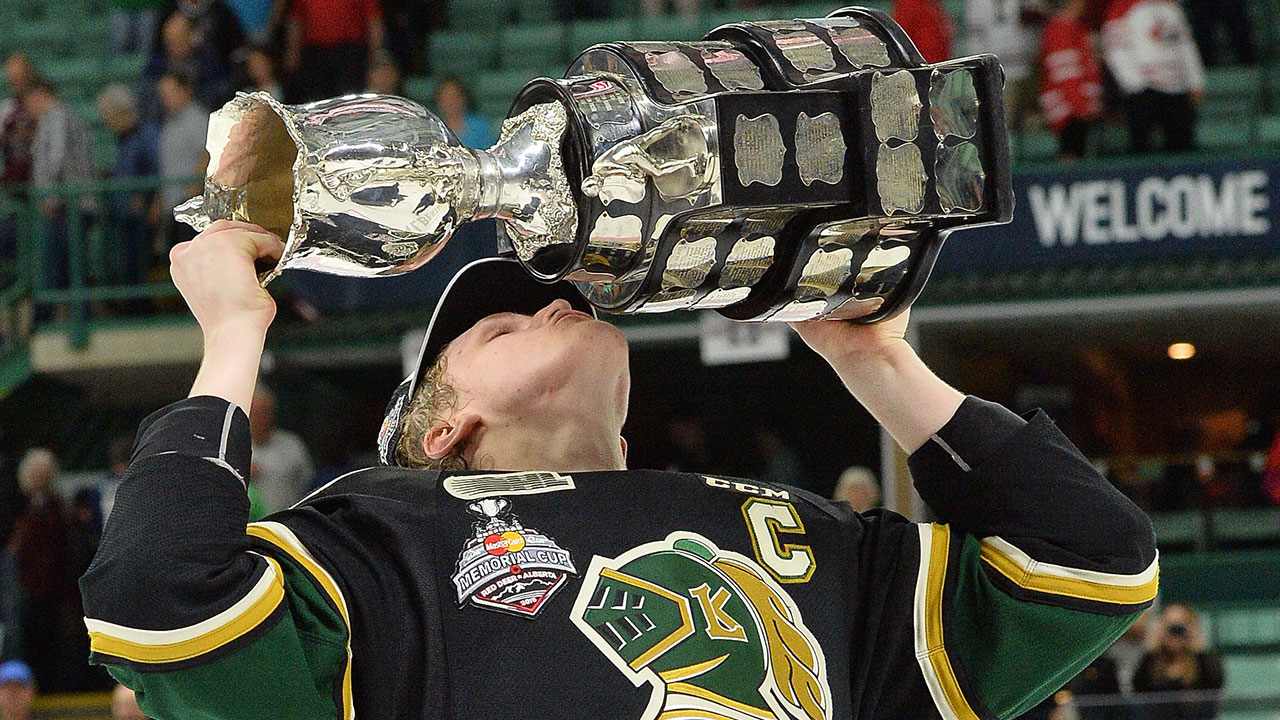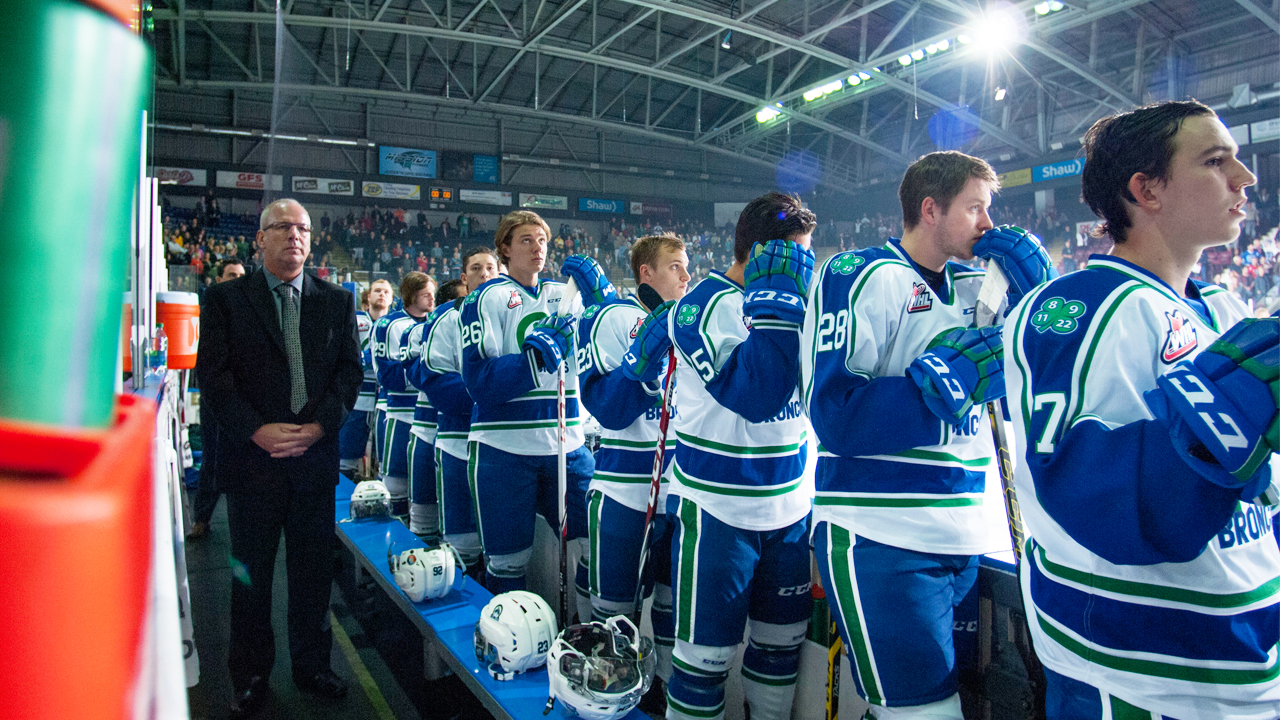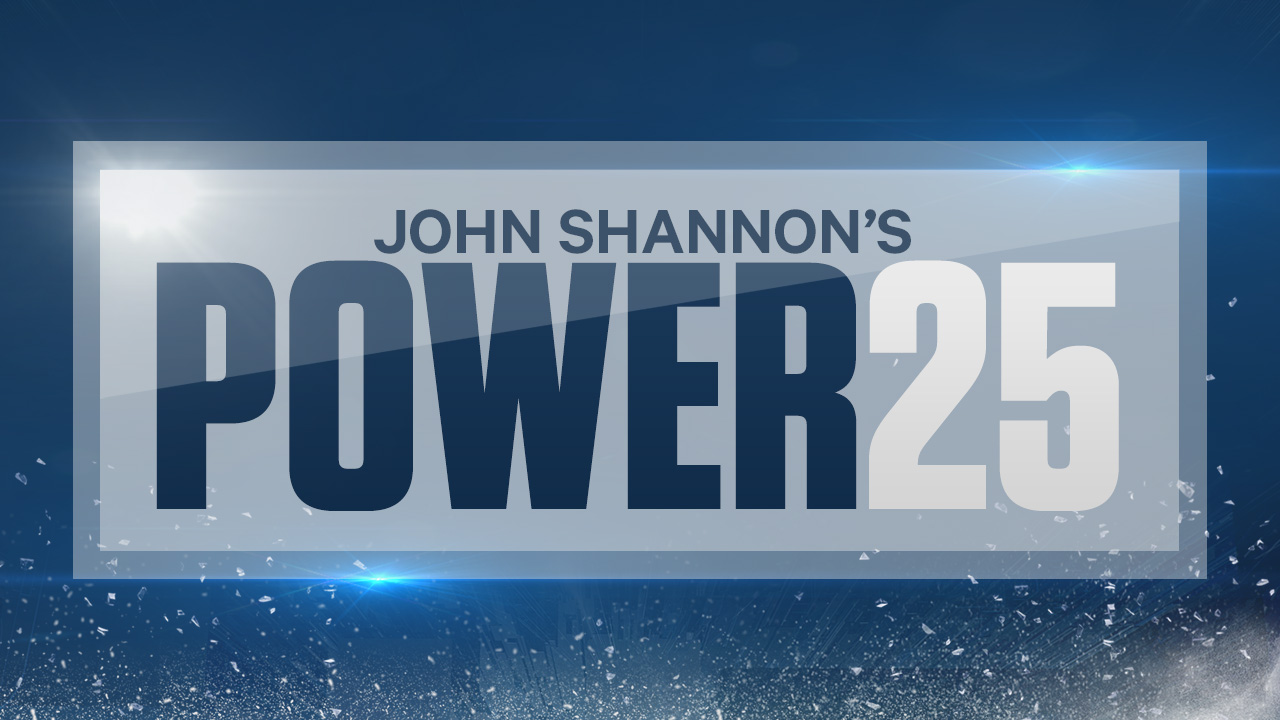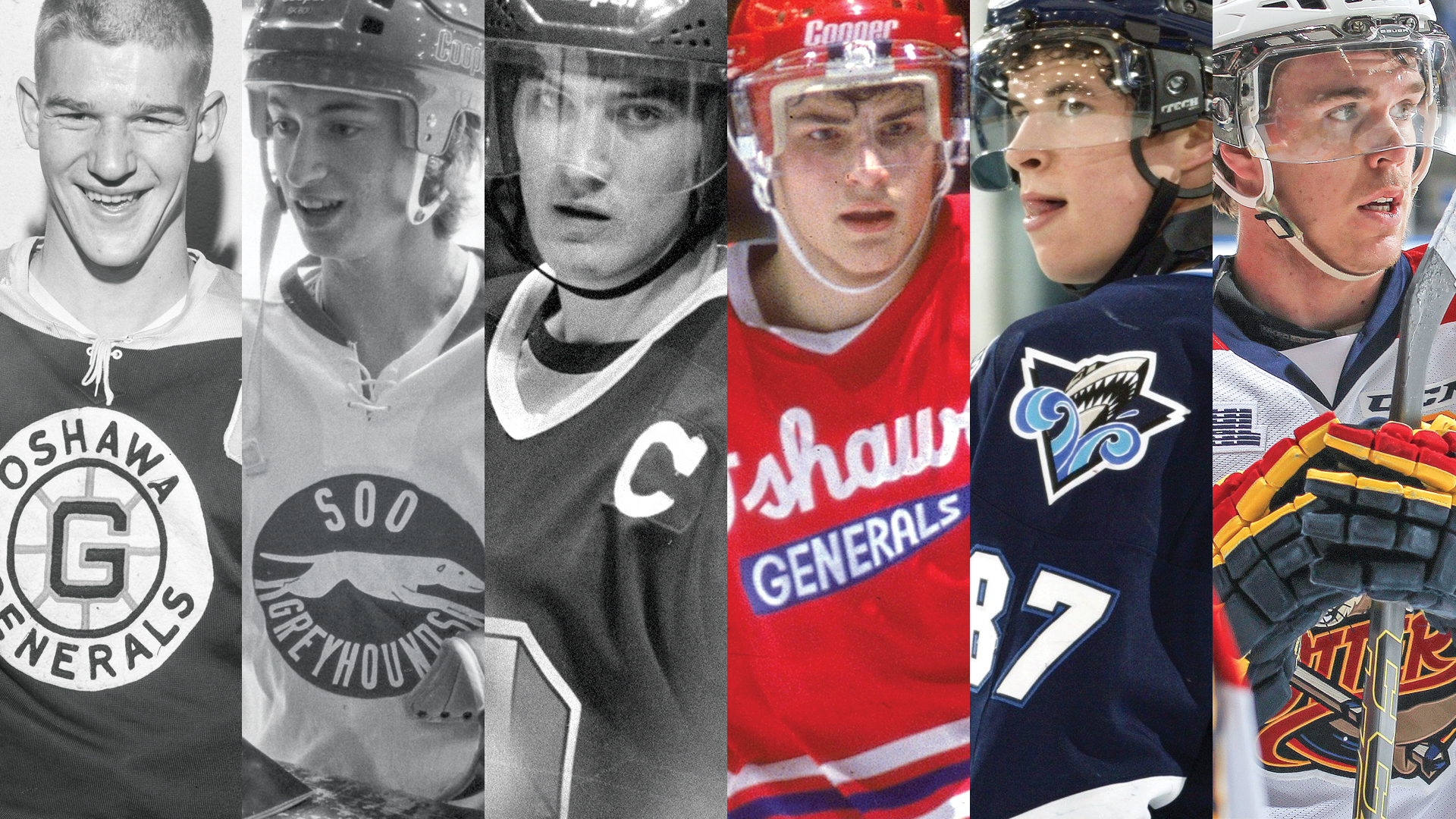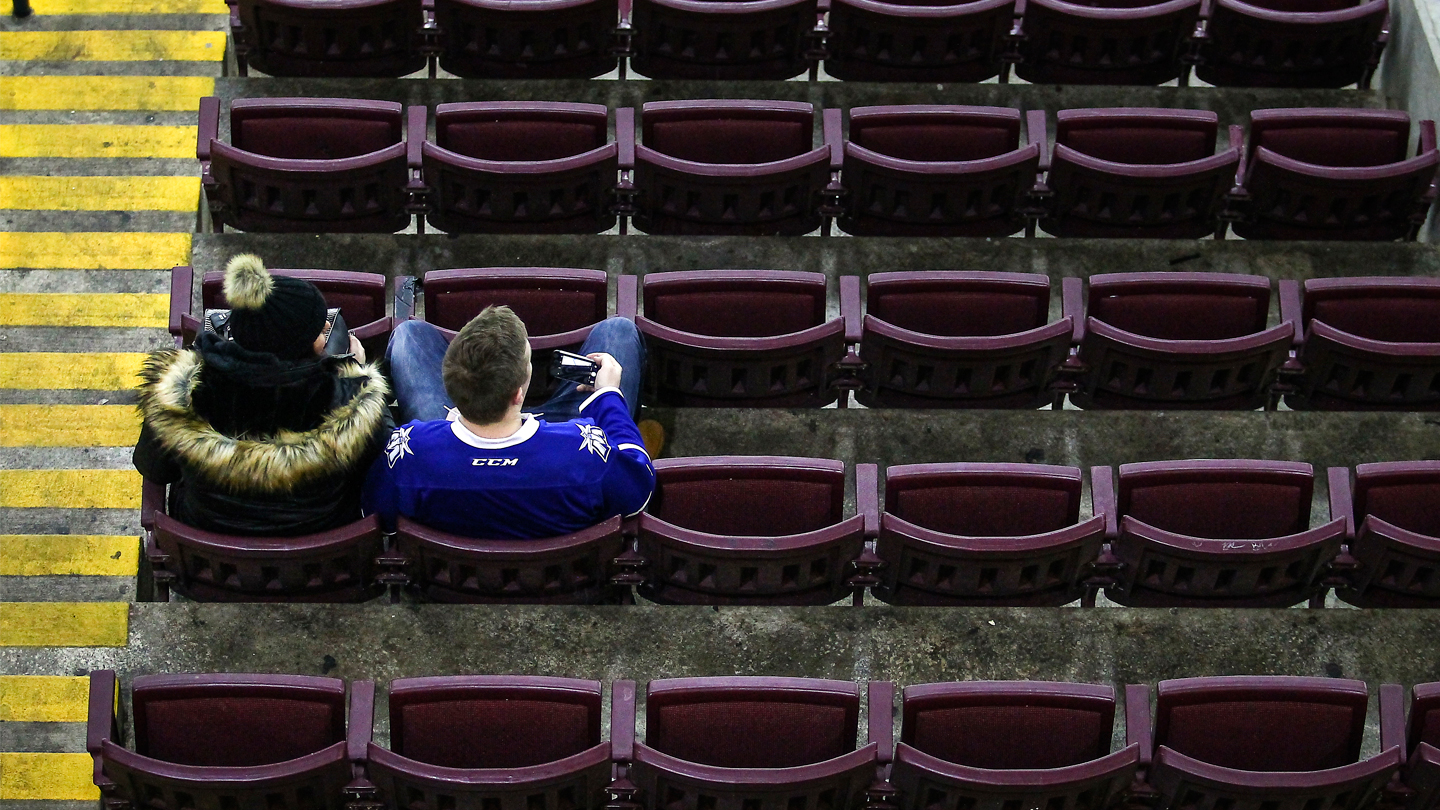Litigation doesn’t capture anyone’s imagination, with the exception of those billing the hours. Thus, there isn’t exactly CHL civil-suit fever out there.
But whether Joe Fan knows or cares, lawyers representing a few hundred CHL players past and present are seeking damages—pay for time those players put in over the course of the junior careers. The foundation of their case is basic: The CHL is a for-profit business. As such, its players are employees. And as such, the players who signed on to the suit believe that they should be paid for their time, at least minimum wage, if not more.
To the extent that fans are aware of it, the CHL’s straight-faced reaction to the lawsuit is entirely predictable: If you’re claiming we’re a for-profit business, you’ve obviously mistaken us for someone else; over here, most of our teams are bleeding money and fighting to keep the wolves from the door.
I don’t imagine that there’s much water-cooler talk about the cases—Lukas Walker v. the WHL, CHL et al and Sam Berg v. the OHL, CHL et al. Outside the confines of the courts and law offices, the cases are most often characterized as a class-action suit. They are not that, at least not yet. The plaintiffs are seeking the certification of their claims as a class-action, and those are matters still before the courts. We breathlessly await those rulings—to give you an idea of the pace of the proceedings, Ted Charney, a Toronto lawyer specializing in class actions, started reaching out to players in October 2014.
Talking to experts in class-action law, you don’t get a clear-cut idea of how this will play out—they’re not about to stake their reputations on opinions about cases before the courts, ones that they’re not much acquainted with. They will tell you that there are merits on each side, but that’s about it.
With little more than cursory knowledge of the case publicly available, any hunt for a villain probably says more about the hunter than the relative merits of the civil action.
If you think the CHL’s franchise owners benefit from a Dickensian system, every team tantamount to a teen theatre company production of Oliver, then you’re pulling for the long-exploited plaintiffs. Lo, there they go, adolescent spiritual heirs of Curt Flood, waging the good fight.
If you think the players do just fine under the present system—love of the game and all that—then you’re likely viewing this as a bunch of impressionable young men falling under the spell of lawyers who hope they’ll see a buck at the end.
There are a finite number of outcomes from the suit, but not all are uncomplicated. If the civil action is thrown out of court, the shape of major-junior hockey in this country will remain the same. If, however, the plaintiffs do prevail, it might not be just the CHL and the owners in its member leagues that feel the hurt—many teenagers, intended to be beneficiaries of a fairer system, could feel it too.

The CHL and its franchise owners didn’t see this coming. There were no storm clouds on the horizon, no rumblings at the arena. I’m now in my third decade of hanging around CHL rinks, and I have heard far more griping journalists than griping junior hockey players. I’ve talked to a few players who had run-ins with coaches or were unsatisfied with playing time, and maybe they had some cause for complaint. I’ve never heard one say: “I should be getting paid for this.” Not on any bus I’ve ridden or at any breakfast before the ride to the rink. I’ve never heard a 16-year-old stand up and, with a clenched fist held aloft, shout, “Worker’s unite.”
Nor has Jeff Jackson, agent to Connor McDavid and many others players who have both gone on to the pros and missed that shot. “Everybody has choices and everybody goes into it with eyes wide open,” says Jackson, who played major junior before going on to the NHL and, later, law school. “I was happy as a player to get $20 a week and play in the best league out there. I didn’t really think about getting paid to play and I haven’t heard players today talking about it.”
Let’s set that aside for a moment.
Those who believe that CHL teams should be cutting cheques for the talent like they do the coaches and staff draw parallels between the league and NCAA football and basketball. The notion: U.S. colleges get a lot more out of athletes in the high-profile sports than they give back to them. Media pundits and outspoken players past and present maintain that those who play in the National Championship Game or March Madness should get paid. And those attached to the players’ side of the CHL civil actions make a similar case.
On sheer scale, though, there doesn’t seem to be much common ground between the CHL, whose teams live and die by the gate, and the NCAA with its billions in revenue from television rights, merchandise and licensing. It’s hard to find a link between the 100,000 at the Big House to see a game broadcast across the U.S. and the under 2,000 fans who’ve braved the cold in Swift Current to see a game that can’t even be found on a community-access channel.
Those advocating for the players will say scale has nothing to do with the principle of thing. NCAA athletes have become more outspoken about what they see as a raw deal. The football team at Northwestern attempted to unionize in 2015 but that went sideways when the U.S. National Labor Relations Board decided to punt the case through the end zone. Maybe Northwestern was the real Curt Flood v. MLB redux, a loss before a win for the good guys.
The irony is that many of the same people who say that the CHL is an exploitive system will turn around and tell you that NCAA hockey is a better route for young players. Several problems issue from that—three that are practical and another posing a bit of a moral conundrum. The first is a matter of, what else, money.
To be NCAA eligible the player at age 16 and 17 has to bide his time while he graduates high school and qualifies academically for college play. The interim seasons are likely spent in a junior league at least one level below the CHL—Tier II in Ontario or the BCHL and AJHL out west as examples. The snag: Junior A teams might help out players with some expenses but other costs, including equipment, fall to the parents. Further, there’s the matter of team fees. According to one agent who has advised several NCAA-bound players, costs in Ontario Tier II run in the range of $5,000 to $7,000 per season. And further yet, with the exception of elite prospects, NCAA hockey programs aren’t interested in “true freshmen,” those who graduated from high school the previous spring. Rather, NCAA coaches are looking to recruit 19-year-olds, thus requiring players to suit up for more than two seasons in Tier II or Junior A. Lastly, on the practical end, while NCAA programs offer four-year rides, nothing is truly guaranteed. If an NCAA program or coach doesn’t take a shine to a player, he can be hung out to dry with no options. If he hopes to transfer, schools aren’t eager to underwrite his redshirt year. That player can end up paying part or all of his tuition for the year he sits on the sidelines.
If you’re willing to go down this road simply to bypass the supposedly exploitive CHL system, consider this: Only a few NCAA hockey programs break even or make money. Most are a cost to athletic departments, one that’s underwritten by the blood, sweat and toil of, yes, those same exploited football and basketball players. That’s not exactly the moral high ground that proponents of NCAA hockey might imagine it to be.

If you’re hoping to back the winner in these civil actions, don’t push in all your chips just yet. At this point, don’t even wager on whether judges will certify these cases as class-actions.
If a judge is convinced that the contracts signed by the players or their guardians are standard across the league—or relatively so—rather than individually negotiated, it’s a boost to the plaintiffs’ case for certification. But CHL contracts do vary based on the round in which a player is drafted, and education packages are to some extent determined by that. A judge who rules on certification of a class action tests the case on several counts: Is there an identifiable class of people? Will a class-action potentially solve most of the issues in play? Will it lead to a manageable outcome or leave too many issues unresolved to merit the courts’ time? Ultimately, one test seems to be the hinge of the plaintiffs’ case. “With the Class Proceedings Act it comes down to ‘What’s the commonality among the players?’” explains Jasminka Kalajdzic, an associate professor who teaches class-action law at the University of Windsor. “If it’s seen as a standard contract [across the league and teams] then it’s in the plaintiffs’ interest. As defendants, the league will highlight how each player is different.”
Again, it will be interesting to see exactly how forthcoming the CHL et al is willing to be to spoil the “commonality” argument. The league could point to, say, the Windsor Spitfires and Portland Winterhawks, teams that were slapped with fines and loss of draft picks for giving special consideration to certain star players. If the leagues showed any substantial evidence of stealthy payments to players and their families (rumoured to be business as usual with European imports), it would tarnish the image of the CHL, but it might tip the call on certification to the defence.
The most publicized aspect of the civil actions so far has been a matter of finances. The plaintiffs submitted valuations of the CHL franchises prepared by Kevin Mongeon, an assistant professor of sport management at Brock University. Responding to a court order, the CHL, the WHL and the OHL offered into evidence a summary of the leagues’ and teams’ revenues and operating expenses compiled by KPMG. The league also submitted a report from Norm O’Reilly, a professor of sports administration at Ohio University’s business school, analyzing the CHL’s profitability and assessing the impact of a minimum-wage policy.
O’Reilly’s affidavit painted a dire picture of the effect of a court-ordered minimum wage for CHL players: “I was able to conclude that the implementation of such a policy would put significant financial pressure on the majority of the 42 clubs.” According to O’Reilly, the first option would be to offset the cost of minimum wage for players by cutting expenses. The next option would be to ask franchise owners to dig deeper in their pockets. The last option, the doomsday scenario, would be to fold franchises, giving fewer teenagers a chance to play junior hockey and depriving communities of a chance to see junior hockey.
Moshe Lander, a Concordia University professor who teaches the economics of sports, reviewed the documents from both sides and found neither to be a fair or persuasive reading of the financial state of the CHL.
According to Lander, the numbers submitted by the plaintiffs are wholly speculative—Mongeon did not have any significant or representative paperwork from 40 of the 42 teams, only the books of the community-owned clubs in Kitchener and Swift Current. Mongeon largely based his valuations on the numbers reported in franchise sales.
KPMG had access to the CHL’s books, but Lander suggests that the defendants’ affidavit is incomplete, given it lists revenues and operating expenses as single-line entries for the leagues and teams. An owner or part owner might have a paying job as club president, GM and/or coach. Any salary paid to him could be designated an operating expense. Even KPMG included a conspicuous qualifier in the affidavit they prepared, basically saying, “these are the numbers we have been given and they might be subject to change.”
“On both sides, it’s not a matter of can or can’t but rather want or don’t want,” Lander says. “[Mongeon, KPMG and O’Reilly] did what they were asked to do: Find an analysis to support [a] starting position—for the plaintiffs, what they want [done], and for the defendants, what they don’t want to do.”
Given that lack of both certainty and clarity, let’s look at the minimum-wage for CHL players hypothetically. And in doing so, let’s take the league at its word, presuming that the figures in its affidavit give an unmuddied picture of the CHL’s finances.
The league in its submission is saying, effectively, that the majority of teams would suffer huge losses or have to fold if they were burdened with the additional cost of minimum wage for players on top of their existing expenses. (A one-time payout to former players for services rendered would only compound the misery.) Doubt or dispute that if you please—and surely the plaintiffs will—but even if you look just at the numbers that the CHL submitted and then take a reasonable guess at the cost of adding that minimum wage, it does seem possible that the league could restructure and get out the other side.
First, let’s dream in technicolor and go with the macro: Say the CHL convinces the big-fish franchises to share with the minnows. Yes, somehow Owen Sound participates in the London Knights’ good fortune. Ditto, say, Swift Current in an operation like Calgary’s or Edmonton’s. That would be real cause to take the leagues at their word that everyone is doing all of this for the good of the game.
If you can sell revenue sharing, please do. And then get back to us to negotiate world peace in our time. But again, this is a hypothetical argument. Play it out.

At a glance, the math with pooled profits doesn’t look too promising. The member teams of the leagues cumulatively operate at a profit of not quite $3-million per year, according to the KPMG report. And minimum-wage pay for players based on a 40-hour week might run to $300,000 a team. Multiply that by 20 teams in the OHL and 22 in the WHL and it looks dire. But it’s a lot less so if the work weeks were knocked down to 15 or 20 hours, so how you calculate the work week would be crucial to franchise viability going forward.
Faced with the cost of that minimum wage, teams would have to look for places to claw back expenses. Line-item stuff is out there. They could adopt a model like Junior A or Tier II and put players on the hook for their equipment, for room, board and transportation. They could limit travel and break leagues into regional loops with no expensive crossover. There’s not a lot of fat to cut, perhaps, but some gristle can be carved away.
One single line in the affidavits, though, could provide a means for underwriting minimum wage for players: Cut the CHL education packages—that is, the prime existing benefit for players. According to O’Reilly’s affidavit, half the players in the OHL and WHL avail themselves of the education benefits.
Says Jeff Jackson: “My agent Rick Curran was the first to negotiate education packages for junior players back in the ’80s. They’re a great benefit. Kids in major junior get to chase their goal in hockey, but they’re smart enough to know if they’re going to make it as pros and the education packages give a great opportunity—they have discipline and determination, a real head start at 20 and 21 compared to so many other kids who didn’t play. A kid paid minimum wage to play [in the CHL] will spend that money—I would have burned through it. There’s a lot to be said for the forced savings plan, which is what the education packages essentially are.”
As it stands, education packages are also a sharply rising cost to owners. The OHL scholarship funds jumped from $1.64 million in 2012 to $2.9 million in 2016, and the WHL’s grew from $1.7 million in 2012 to $2.1 million last year.
With the accelerated rise of post-secondary costs, franchise owners might wind up doing better by paying out minimum wage rather than education packages. And if the plaintiffs prevail here and win pocket money paid out weekly, it will be hard to frame the trip to court as a victory. Especially if it comes at the cost of sacrificing the most important benefit the CHL already offers players who don’t go on to NHL millions. It wouldn’t be a Pyrrhic W per se, but it would feel very empty.

